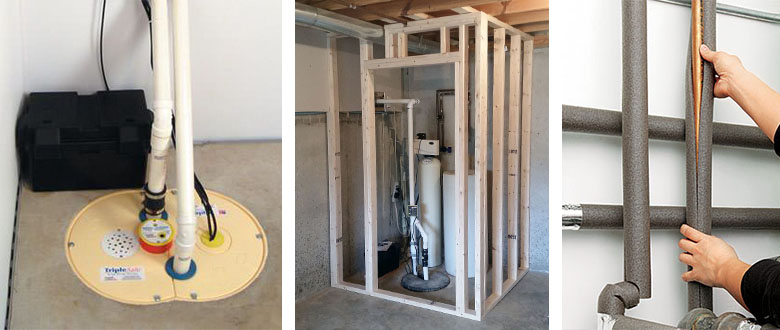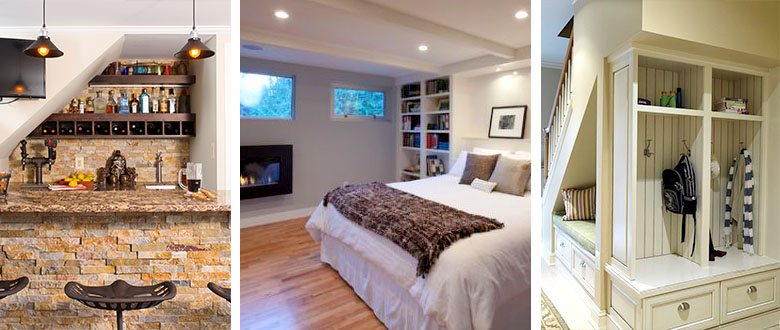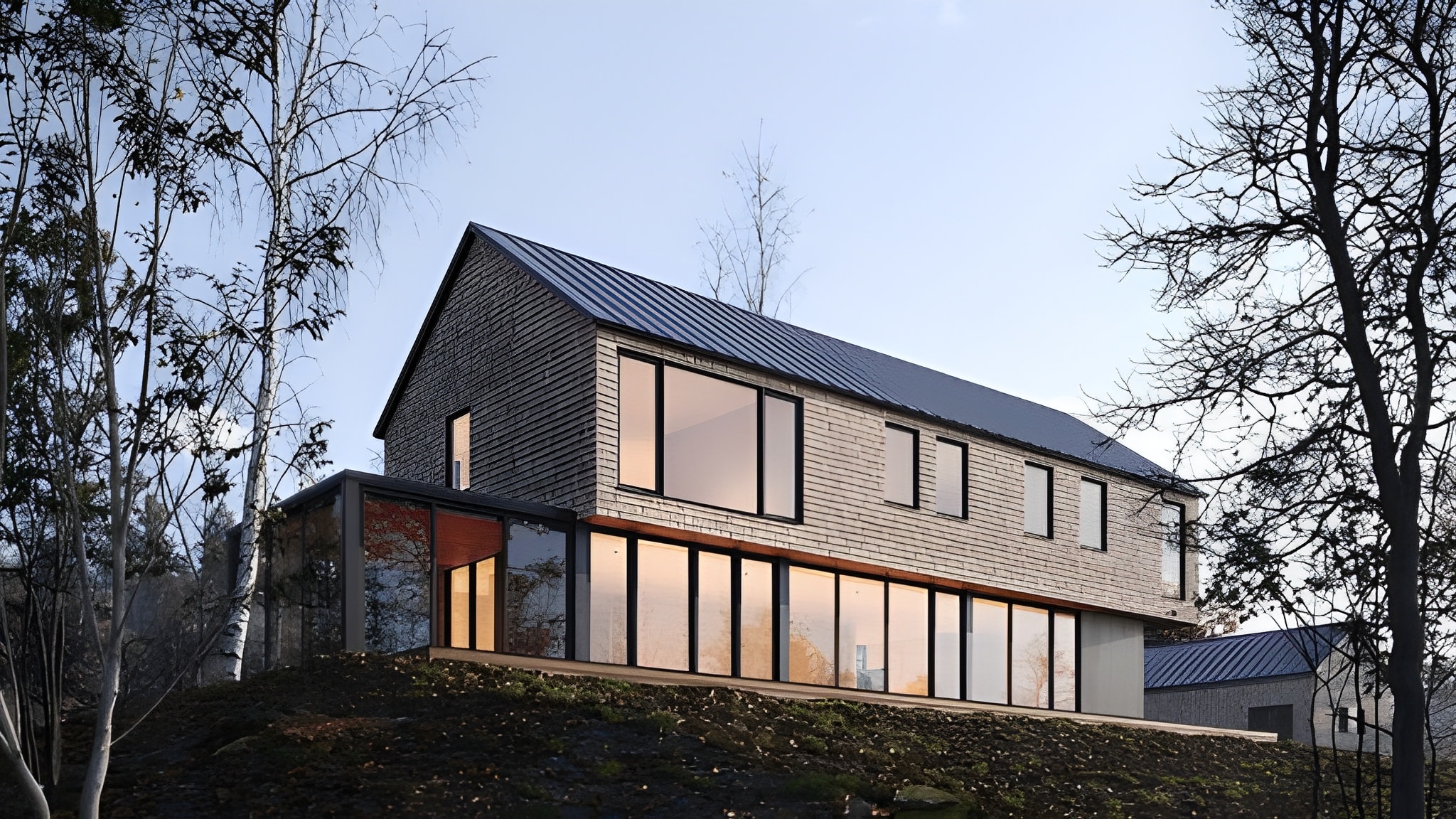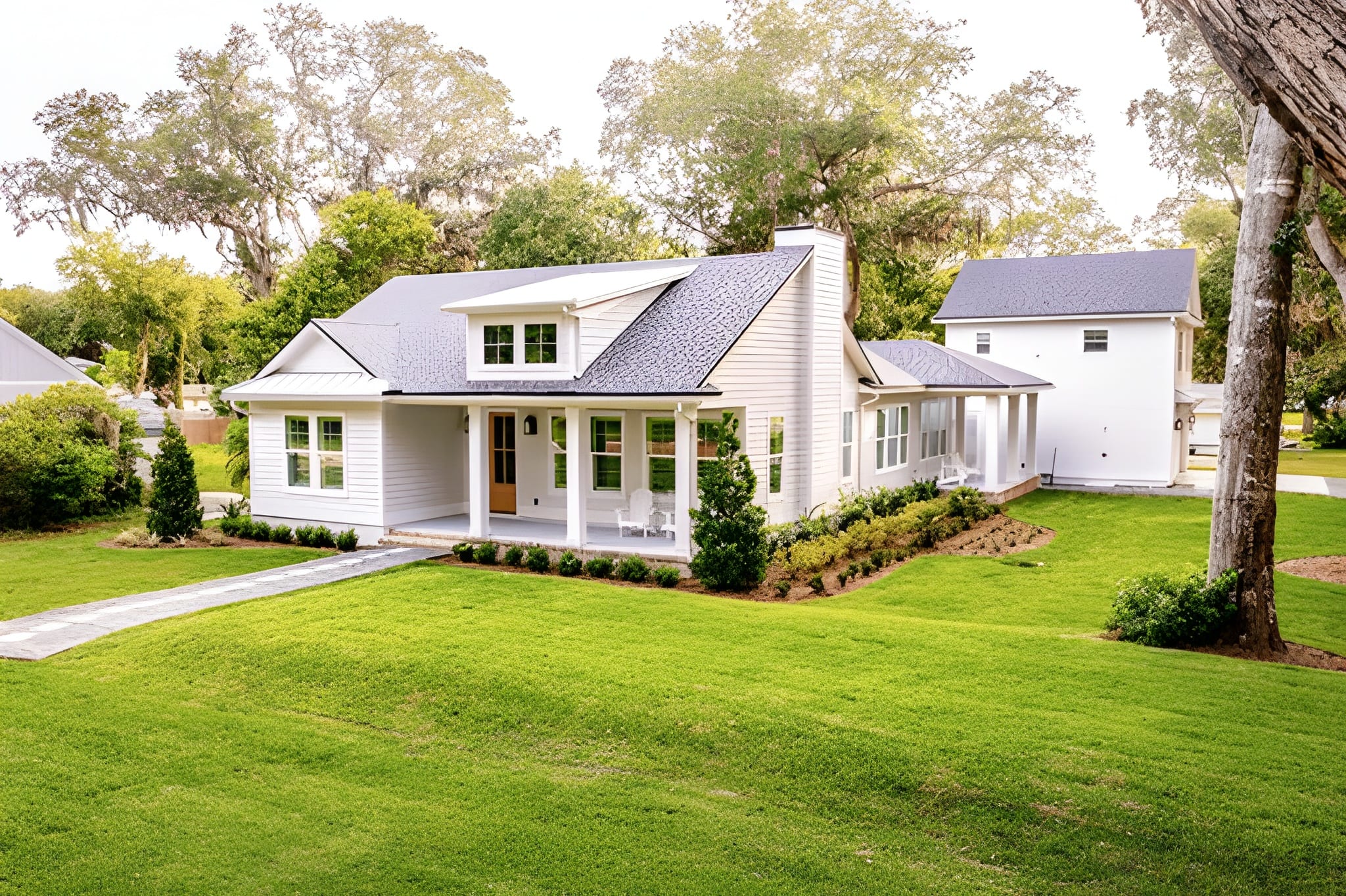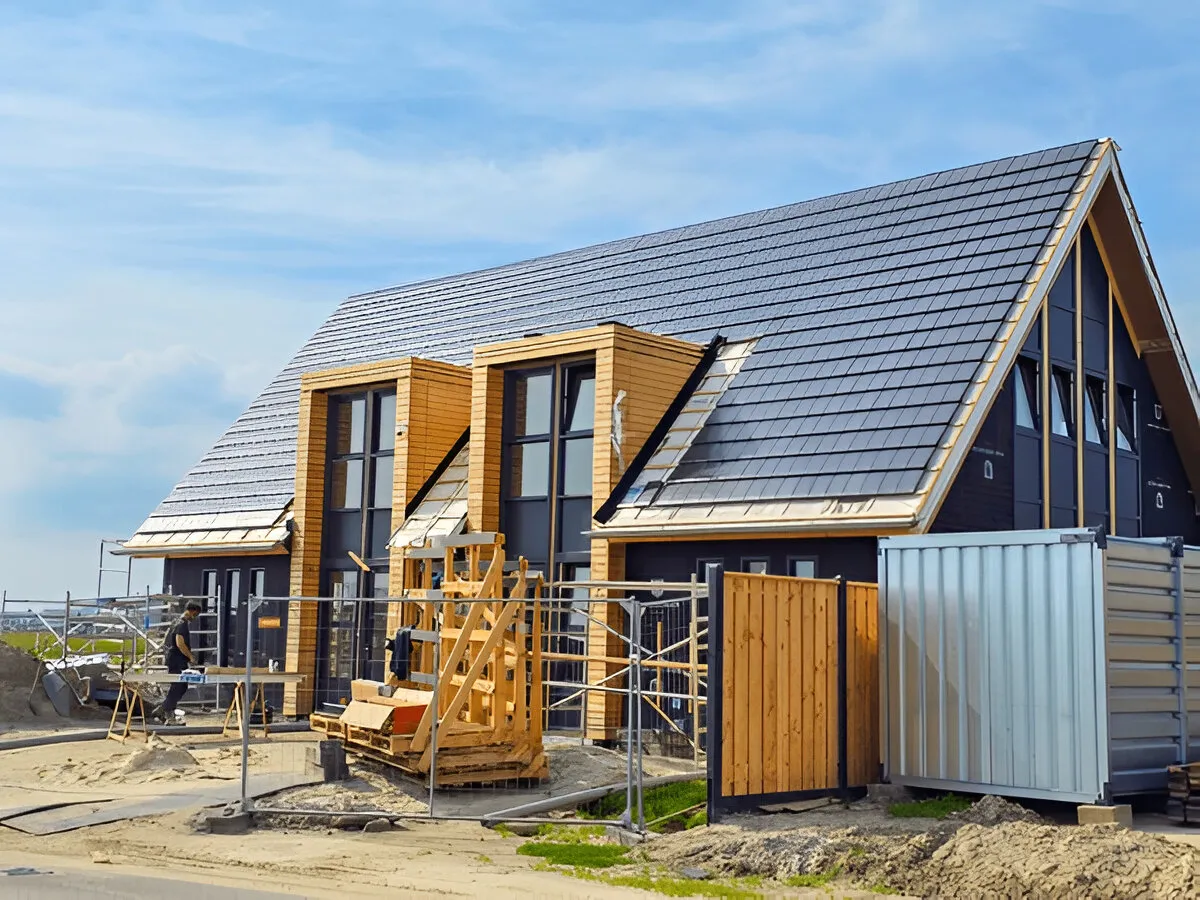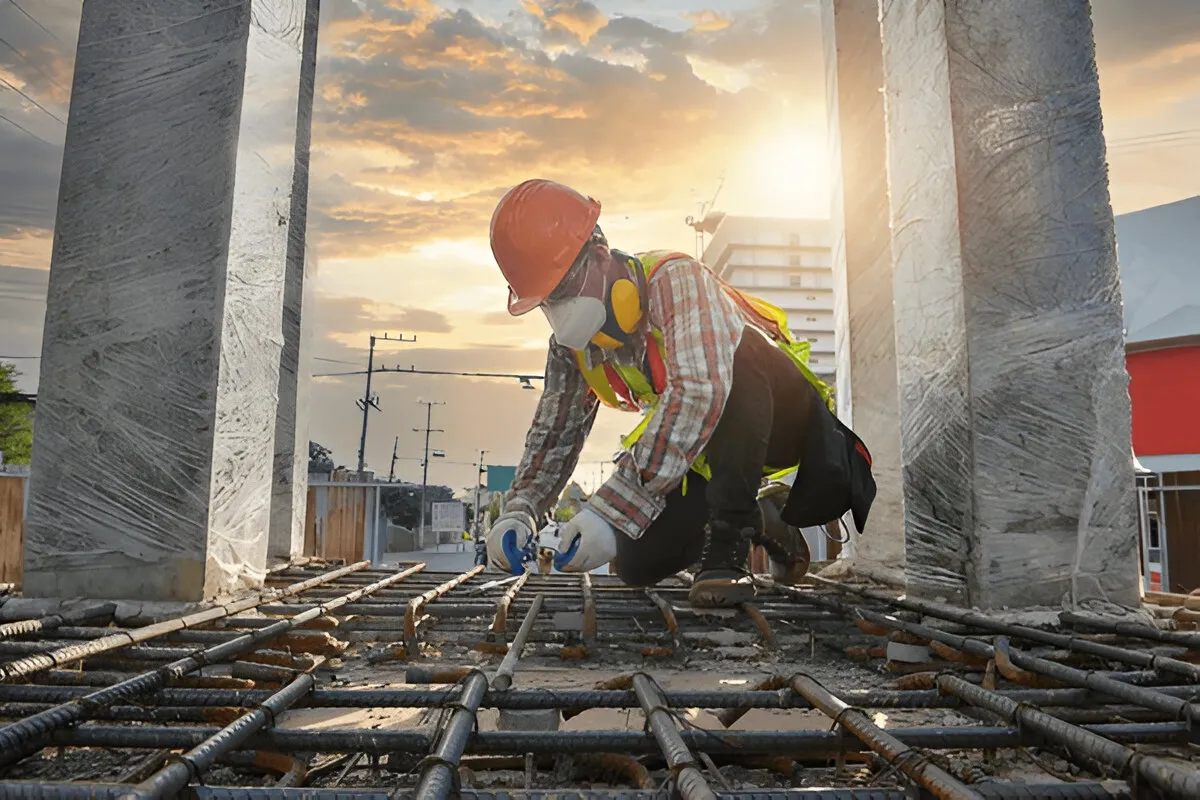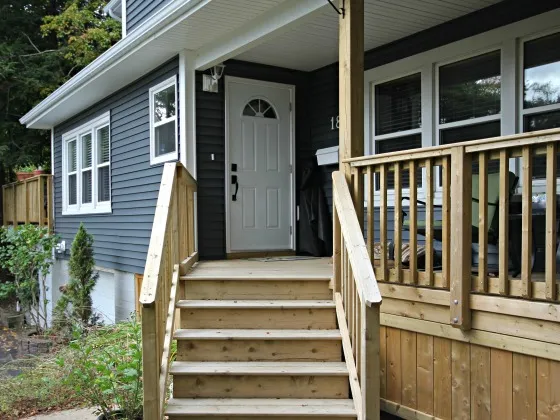Most basements are underused and become a dumping ground for off-season items. But, with a little help, your underutilized space can become your family’s favourite space in the house!
A finished basement is a great addition to any home. They can be cheaper than an above-ground addition mainly because most of the structural work is already there and utilities are close at hand.
Here are some basic below-grade building tips that you should know before you begin.
Inspecting and Preparing your Basement
- Test for moister and check for any damage to exterior walls and support beams.
- Inspect fuel-burning equipment and the ventilation systems. It’s best to call in the professionals to asses and make sure carbon monoxide doesn’t buildup.
- Check sump pumps and drains (and routinely monitor). Having a backup battery for power outages and even a second pump in case the first one gives out is a good idea.
- Use materials that can stand up to moister like mold-proof PVC and drywall or vinyl lined insulation. Do your research on below-grade options.
- Insulate pipes while they’re exposed. This will prevent heat loss and prevent condensation from affecting the walls or ceiling.
- Add a vapor barrier to both the walls and floors prior to framing and finishing.
- Don’t skimp on insulation and always use water and mold resistant options.
Dividing The Space
A blank canvas can be overwhelming, but this list can help you get started.
- You’ll need about 6.5 to 7.5 feet of head clearance. If you don’t, consider digging down to lower the floor or moving pipes and ducts.
- Utilities (HVAC unit, water heaters, etc.) need to be kept clear, open and unfinished. They have specific code requirements and you’ll need to access them for inspection or repairs.
- The area with the most natural light should be used for the the main entertainment area.
- Bedrooms legally needs an “egress” window large enough to exit from in an emergency (about 3.75 foot squared). You might need to replace windows and dig down to create a window-well (min. 2 feet out, to allow room for escape).
- Keep the darker area for your TV zone to reduce glare and create a cozy home-theater feel.
- Locate a new bathroom near existing plumbing to save extra piping costs.
- A kitchen or wet bar area is great for entertaining, but be sure to check with the city to see if you need a permit. (full kitchens might be considered a second dwelling or “in-law suite”).
Design & Details
Lighting
- Lighting is important – you don’t want the basement to fee dim and dreary.
- Channel as much natural light as possible by keeping the space open or creating half walls instead of boxing in each room.
- Recessed lighting won’t take up valuable overhead space.
- Lamps and task lighting work well because they can be moved where they’re needed.
Details to consider
- Light colours help keep the space bright and airy, dark colours give a warm and cozy vibe – it all depends on what you’re looking for.
- Keep in mind the space needed to play pool or ping-pong comfortably. (about 12×15 feet).
- Multipurpose tables are great for card and board games, crafts and hobbies, or a place to rest food and drinks while entertaining.
- Fireplaces can up the cozy factor but be sure there is proper ventilation.
- Built in cabinets below windows act as visual anchors and can help make the high windows seem larger.
- Make the most of your space by using the space under the stairs for storage or a small home office.
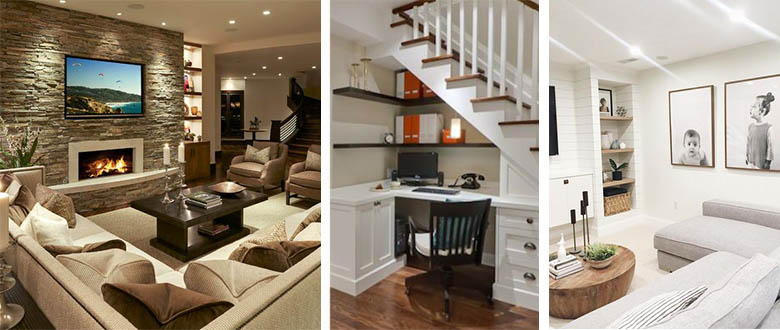
Unfinished Sections
Consider keeping a portion of the basement unfinished – with a few simple tricks, they don’t have to be dark and dingy spaces.
- Brighten it up with a coat of paint directly on the cinder block.
- Concrete floors can be painted or sealed and rugs or foam mats can soften and warm areas where you’ll be standing.
- Simple storage shelves can store off-season items.
- Consider an art space or workshop where you don’t have to worry about splashes of paint and sawdust can easily be swept up.
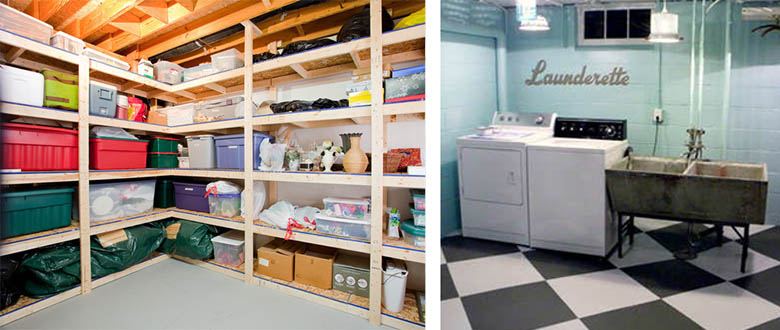
Flooring
Below grad flooring is always at risk of water vapor damage. The harder and less porous the material, usually the more it can withstand.
- Concrete. If you can live with the hard surface, epoxy comes in a verity of colours and is waterproof. Rugs can define each area and warm up the space.
- Ceramic Tiles. There are plenty of choices and they are virtually unaffected by moisture.
- Vinyl and Laminate (tiles or roles). Nowadays, the choices seem endless and real-look options have come a long way. They add a bit of cushioning underfoot, can be applied directly over concrete, and can withstand moisture
- Engineered Hardwood. Gives you the warmth and beauty of real wood with the stability and moisture resistance of laminate, but they can be more costly than other options.
- Rubber. Comes in fun colours and add lots of cushioning for spaces like playrooms.
- Carpeting. Add plenty of warmth but will need a sub-floor and won’t stand up to moister and flooding like the other choices will.
- Carpet Tiles. They’re much easier to pull up and replace sections then full wall-to-wall carpeting and have evolved over the years to include beautiful and luxurious options.
Refinishing a basement could be just what your home needs – but make sure it’s done right the first time. Get professional inspections and all the permits lined up before construction begins. You don’t want to risk your family’s safety or incur extra costs by changing plans halfway through construction.

